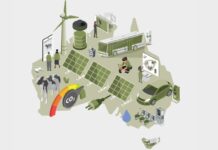
Media Release by Energy Networks Australia
A new report from Energy Networks Australia (ENA) explores Australia’s changing climate and how this is likely to affect future planning and investment by network businesses.
The report, Electricity Networks: A guide to climate change and its likely effects consolidates the latest scientific information on climate change and how it impacts the electricity grid.
ENA Chief Executive Officer Andrew Dillon said the changing environment presented new and unique challenges to Australia’s electricity system.
“Australia has warmed by about 1.4 °C since 1910 – rainfall patterns are changing and extreme events, such as the recent floods in Queensland and New South Wales, are becoming more frequent and intense in many places,” he said.
“These heatwaves, bushfires, storms and floods often seriously damage network infrastructure resulting in more and longer outages to customers and increased disaster recovery costs.
“Networks are acutely aware of the need to ensure the grid is resilient in the face of these challenges and customers want sensible investment to ensure they can manage through and recover from natural disaster events.”
Mr Dillon said the report would help inform further discussion about how networks could continue to best serve customers and communities in this changing environment.
“The document includes forecasts for each state and territory. Where available, there are projections for temperature increases, annual rainfall by area, sea level and extreme weather events.” he said.
“For example, in Victoria, the number of days with very high fire danger rating in spring is increasing across the state. Under the projections outlined in the report, by 2050 there are likely to be 40 per cent more very high fire danger days.
“In Queensland, tropical cyclones are projected to become less frequent, but the intensity is projected to increase leading to more flash flooding and damage to homes, businesses and infrastructure.”
The report is designed to be an authoritative resource for the entire energy sector including executives, board members, operational staff, investors, market bodies, regulators and governments.




















